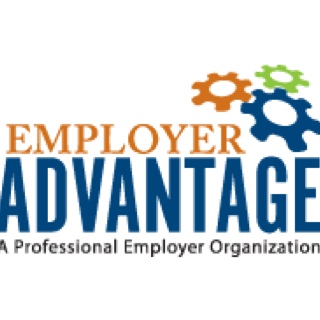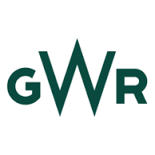Information
-
Document No.
-
Risk Assessment Survey Report
-
Client:
-
Survey Date:
-
Loss Prevention Consultant:
-
Location
-
Personnel
Client Data
Risk assessment to be conducted by an experienced risk management professional for all worksite risk exposures designated by the PEO risk manager or Work Comp insurer.
-
Select one of the following:
Client Data
-
Producing Office:
Employer Advantage -
Servicing Office:
Employer Advantage -
Opinion of Risk:
-
E-mail Address:
-
Telephone:
-
Contact Name:
-
Number of Full Time Employees:
-
Number of Part Time Employees:
-
Years in Business:
-
SIC/NAICS Code:
Description of Operations
Description of Operations
-
Instructions: Provide a complete description of the operation, including all locations and operating entities. 1. For service operations, describe the services provided, principle customers and locations. 2. For manufacturing operations, describe the raw materials, manufacturing process, finished product(s), end user, and method of delivery to the end user. 3. For construction risks, describe the type of contractor, primary area of operation, number of jobs per year, average contract size, and type and percentage of work sub-contracted.
Exposures / Hazards / Controls and Claims
-
Instructions: For each exposure listed below
* Describe the extent of the exposure, any hazards associated with the exposure and the number of employees exposed.
* Describe the controls currently in place and the 3-year loss history for each exposure.
* Inadequate or missing controls will generate recommendations designed to reduce or control the hazards.
* Delete any exposure not present. -
Note: The following exposures are often found at most types of risk; however, this list is not all-inclusive. You should adjust list, as appropriate, to adequately and accurately describe the exposures at the risk.
Material Handling:
-
Describe the weight, range of the lift, frequency of the lift, nature of material and number of employees performing task.
Catastrophe Potential:
-
Describe the potential for multiple severe injuries or deaths. Note: This is usually associated with the potential for explosion, fire, and natural disasters at the worksite.
Slips/Trips/Falls on Level:
-
Describe trip hazards, walking/working surfaces, housekeeping, etc.
Falls - Different Level:
-
Describe exposure to falls from platforms, ladders, scaffolding, etc.
Environmental Health:
-
Describe employee exposure to hazardous chemicals, fumes, mists, dusts, ionizing or non-ionizing radiation, heat or cold extremes.
Welding and Electric or Gas Torch Cutting:
-
Describe the type of welding/cutting and type of materials welded/cut.
Transportation:
-
Include number of vehicles by type, number of drivers, driver selection procedures, radius of travel, maintenance procedures, whether DOT regulated, materials transported, vehicle inspection procedures, vehicle safety program as appropriate.
Subcontracting:
-
Describe types of work subcontracted, process for obtaining and maintaining WC certificates, and any hold harmless agreements in subcontracts.
Production Machinery:
-
This pertains to stationary production machinery such as punch presses, roll forming machines, shears, cut-off saws, etc.
Watercraft or Aircraft Operations:
-
Describe any exposure and the extent.
Three-Year Loss Analysis:
-
Provide information regarding trends in types of accidents, injuries and illnesses, and the frequency and severity rates. Compare rates to Bureau of Labor Standards statistics for similar operations to determine if such rates are considered normal for the type and size of workforce being evaluated.
Management Attitude / Comments:
-
Describe the owner / manager's attitude regarding providing a safe environment for employees. Provide comments regarding the desire and availability of resources to implement loss prevention requirements. Describe the reason for any "below average" opinions you may have regarding the risk in comparison to other risks in the same industry and with respect to the PEO's and WC insurer's guidelines and policies. Provide any other comments pertinent to the acceptability of the risk.
Potential for Loss:
-
Express your opinion regarding the potential for frequent or severe injuries or illnesses of worksite employees, e.g. "Potential is for low frequency, but high severity due to vehicle exposure.
Verification of Worker's Compensation Coding:
-
Verify the WC class codes applicable to the risk. These may be obtained from the "Request for Proposal" document. Use the NCCI "Scopes Manual" or similar guidance where needed to ensure proper classification of the business and job positions.
Proposed Service Plan:
-
Describe the frequency and type of services you plan to provide this client based on your analysis of the client's potential for employees accidents, the needs of the client for specific safety management activities or to assist them in meeting their state and / or federal regulatory compliance requirements. The plan should also include the standard list of services provided for this type of risk.
Critical Loss Prevention Requirements:
-
List only those requirements that must be addressed for the prospective client to be accepted for PEO services or that must be addressed for an existing client to remain a client or to continue to be covered under the PEO's WC plan.
-
Critical Items
-
These should be included in an "exhibit" to the client service agreement for prospective client, along with the time frames, which they must be satisfied by the client.
Non-Critical Loss Prevention Requirements:
-
List any recommendations you think should be implemented, but if not implemented, would not change the acceptability of the risk.
-
Non-Critical Items
Recommendations












